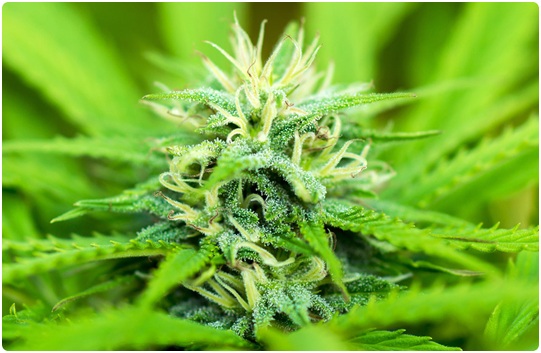
Good soil is basically nature’s garbage. Inorganic elements like silicates mix with organic materials and the nutrients therein.
Bugs,
birds, varmints, and vermin, they all leave their waste to decompose
and enrich their environment. Throw in some worms, nematodes, and
bacteria, and you have a source of life for growing things like
flowering greens.
Left
to do its thing or nudged along with some management, soil can produce a
viable and enviable crop of cannabis. But, since there are no FDA
approval standards for “organic cannabis, you might consider the benefits organic strains hold over regular cannabis.
What makes weed organic?
The Organic Cannabis Association (OCA) offers
members training and certification in the standards they advocate for
cannabis growth and packaging. Their mission states, “we believe that
the issue starts literally at the root … working hand in hand with
growers to advance socially responsible and environmentally sound
business and cultivation practices.”
The
OCA wants to see the consumers informed on product origin, quality, and
production. They hope to improve consumer information and to promote
sustainable agriculture. At the same, time they see a marketing appeal
to a new generation of cannabis users who find an appeal in things artisan, local, and organic.
There
is a conservative school that renounces any farming requiring a rake.
They would have “organic” applied only to growth that has never been
fertilized, sprayed, or handled by anything but hands.
On
the other hand, the expanding legalization of marijuana possession and
sales will drive multiplication of large cannabis farms looking for the
economies that come with prepared soils, artificial fertilizers, and
chemical pesticides.
Somewhere
in the middle lie the earnest providers who want to provide a quality
and healthy product with the advantages of the most sensible practical
farming methods, like using sterilized soils, enriched with organic
nutrients, natural pesticides, and purified water.
6 reasons it’s worth the effort:
- Yield: Well done, there is no reason to expect a reduced yield from organic growing. There is a learning curve, but once you can optimize your growing conditions and methods, your yields might surprise you.
The
clean soils, organic fertilizers, and nutritional nutrients have
improved over time. You can easily find super-soils specifically right
for cannabis growth, not unlike those soils naturally engineered for
roses, violets, or orchids. With some experience, you may find such
selective soils require nothing additional.
And,
you can always develop your own soils through trial and error mixes of
blood meal, bone meal, bird droppings, desiccated insects, and worm
castings.
- Potency: You need to know your strains and their ancestry. Their potency depends partly on the soils used in their development. The more data you have on the strain, the more easily you can replicate its growing environment.

The
potency of the cannabis produced reflects the richness and
appropriateness of its nutrients. Natural nutrients include an alphabet
of organic or natural chemical components. And, you want to create the
right balance of boron, calcium, cobalt, copper, iron, magnesium,
molybdenum, nickel, sulfur, zinc, and more.
The right mix for the right strain will increase potency compared to the cannabis grown with ordinary methods.
- Flavor: Healthy cannabis plants produce better aroma and flavor. Healthy organically-grown cannabis produces robust terpenes and terpenoids, the source of rich and intense flavors.
These growths provide the sweet, citrus, woodsy, or skunk aromas that enrich the smoking experience.
- Environmental Impact: With richer soils and cultivation, the plant base is microbe and compost rich in natural elements. This encourages and strengthens rooting, water retention, and disease resistance.
It
also produces a healthy runoff, a brew of the best virtues of the soil,
free of synthetic chemicals and pesticides. Moreover, growing marijuana
outdoors reduces the electrical consumption in sustained artificial
lighting. According to indybay.com,
it takes the equivalent of half of a ton of coal to produce eight
ounces of cannabis bud raised indoors under artificial light.
- Toxicity: Used indoors or outdoors, pesticide and systemic treatments have been linked to bad health and allergies. And, they leach into the bio-sphere where they threaten the food chain based in natural soils.
For
example, you can use ladybugs as a natural solution to aphids without
leaving the toxic trail. By encouraging natural predators, you can avoid
artificial and synthetic options. Even hydroponic solutions deserve
scrutiny for artificial elements.
- Personal: Just as your home-grown tomato tastes better to you, you will enjoy the smoke resulting from your personal time and effort.
With
some learning and some trial and error, you can raise your own potent
and tasty weed. And, you can do it in the same garden or hothouse where
you raise your organic tomatoes, onions, beans, and other herbs.
What it means to you
Organic
marijuana generally offers no convenience. Until producers and farmers
involved in seed to sales can certify their growing and processing
behavior, customers have no assurance of quality and integrity in
“organic” claims.
For
those who find such claims important and even vital, the best option is
to raise their own. So, it is worth reviewing the benefits organic
strains hold over regular cannabis. It constitutes an effective means of
self-regulation.
"Allbud.com is your comprehensive guide to recreational and medical marijuana
dispensaries and strains where you could find nearby dispensaries with
reviews and/or explore over 3,000 strains with photos, videos and
reviews."
For more details checkout here :- https://www.allbud.com/learn/story/6-benefits-organic-strains-hold-over-regular-canna

0 comments:
Post a Comment